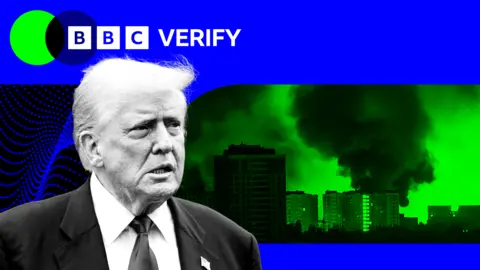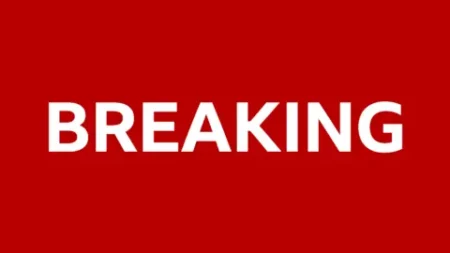The ongoing conflict in Ukraine remains a focal point in geopolitics, particularly with the recent return of Donald Trump to the presidential office in January 2025. Despite his vocal calls for peace and an end to the fighting, the situation in Ukraine has deteriorated significantly. A recent analysis from BBC Verify highlights that since Trump’s inauguration, the number of drone and missile attacks from Russia has more than doubled. This alarming increase contradicts Trump’s assurances during his campaign that he could resolve the conflict swiftly if he regained the presidency.
As tensions escalated under the Biden administration in 2024, the situation reached a crisis point with Trump’s election victory in November. Trump insisted throughout his campaign that a more assertive approach towards Russia could have deterred its aggressive actions toward Ukraine. His claims underscore a persistent narrative that depicts his potential presidency as a solution to the ongoing strife, which he attempted to justify with assertions that a leader who commands respect from the Kremlin could effectively negotiate peace.
However, critics have pointed to inconsistencies in Trump’s administration’s policies toward Ukraine. Accusations about favoring Moscow surfaced, particularly as the administration paused military aid, including crucial air defense systems, during key moments of heightened conflict. These delays have raised concerns about the U.S. support for Ukraine amid surging Russian aggression. Reports from Ukrainian military intelligence reveal that the production of ballistic missiles in Russia surged by 66% within the past year, indicating a significant ramp-up in military capabilities that threatens Ukraine’s defenses.
Data from BBC Verify indicates that during the Trump presidency, from January 20 to July 19, Russian forces launched 27,158 munitions compared to 11,614 in the last six months of Biden’s term. This stark contrast raises questions about Trump’s effectiveness in curbing Russian aggression despite his claims to be ending the war in Ukraine. Statements from the White House, like those from Deputy Press Secretary Anna Kelly, reflect a blame-shifting narrative, where Biden’s policies are depicted as failures that contributed to the prolonged conflict.
In a bid to entice Vladimir Putin towards negotiations, the U.S. administration initially released statements promoting diplomatic engagement. These efforts provided a brief lull in hostilities, but they quickly evaporated by February when discussions stalled and the number of attacks resumed its upward trend. The intensity of the aggression peaked on July 9 when Moscow launched an unprecedented number of 748 missiles and drones, leading to casualties, including fatalities among civilians—evidence of the war’s grim toll on innocent lives.
Although Trump has expressed anger towards the mounting attacks, the Kremlin’s strategies appear unaffected by his frustration. Following a particularly severe barrage on May 25, Trump publicly questioned Putin’s aggressive posture. Despite these rhetorical expressions, the frequency of attacks has only increased, leading Trump to issue demands for a peace agreement by August 8.
The deteriorating situation has also evoked responses from U.S. lawmakers, including Senator Chris Coons, who emphasized that Trump’s actions have inadvertently emboldened Russian forces. He asserts that the lack of a robust U.S. arms supply creates vulnerabilities for Ukraine, which has heightened the urgency for enhanced military support. Calls for advanced equipment such as Patriot missile batteries have intensified, as they represent critical deterrents against Russian air assaults.
Ukraine’s Military Intelligence reports that Russian missile production is currently at 85 ballistic missiles per month, demonstrating an alarming capability for sustained conflict. Furthermore, Russia’s manufacture of drones is reportedly at 170 units per day, showcasing their operational readiness and aggressive military strategy since the return of Trump. This context underscores the broader implications of U.S. foreign policy shifts, where stability depends heavily on military support to Ukraine, ensuring that the conflict does not wane but instead escalates.
In conclusion, the war in Ukraine presents an intricate scenario where political rhetoric intersects with grave humanitarian concerns. As Trump negotiates his position and policies, the reality on the ground remains dire, with increasing numbers of attacks contributing to a public atmosphere of fear and uncertainty among Ukrainian citizens. The enduring question remains whether Trump’s administration will successfully pivot towards policies that not only aim for a ceasefire but also ensure justice and security for Ukraine.












